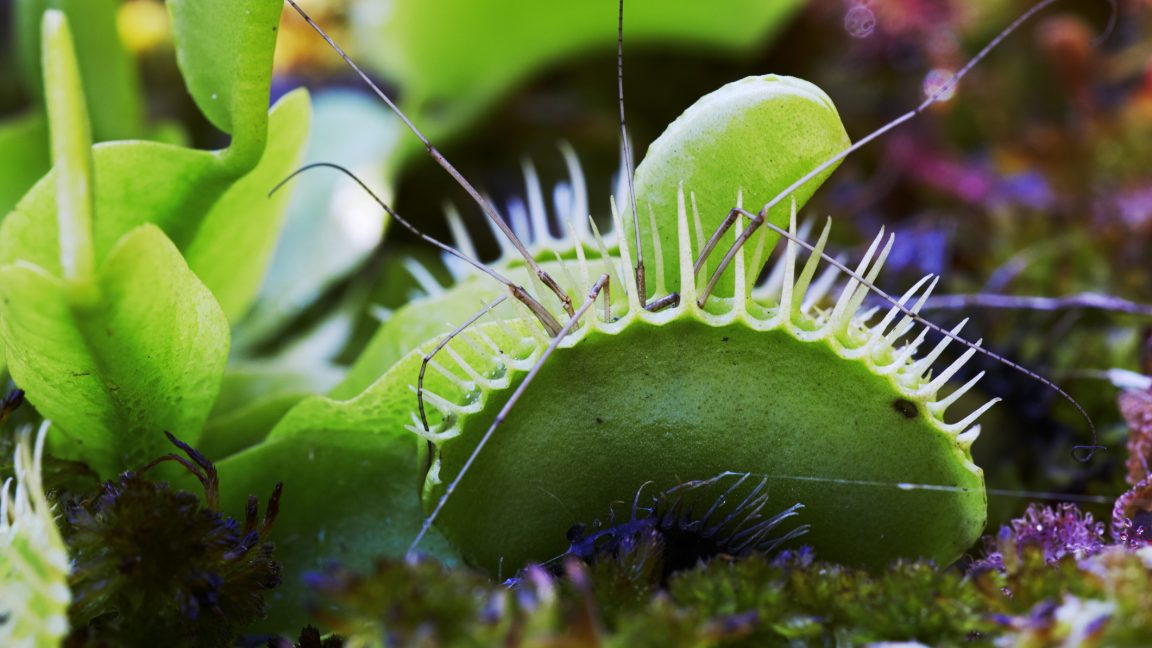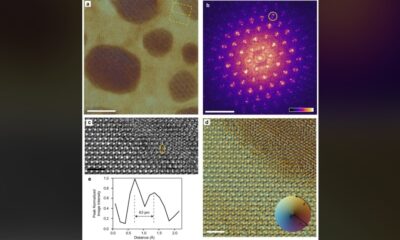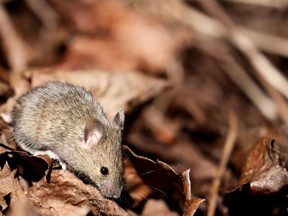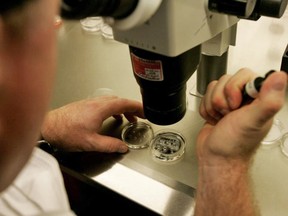Science
Japanese Scientists Reveal Mechanism Behind Venus Flytrap’s Trap

Research conducted by Japanese scientists has unveiled the molecular mechanism responsible for the rapid response of the Venus flytrap to stimuli. This groundbreaking study was published in the journal Nature Communications. The findings provide significant insights into how this fascinating plant captures its prey through a complex interplay of electrical signals and calcium concentrations.
The Venus flytrap, known for its unique ability to snap shut, relies on highly sensitive trigger hairs lining its leaves. When an insect lands on a leaf, the plant detects pressure on these hairs, which generates rapid electrical impulses. This action initiates a series of responses that ultimately lead to the plant trapping its insect prey. Once captured, the insect is held in place by long cilia, allowing the plant to secrete digestive juices that break down the prey over a period of five to twelve days.
Previously, in 2016, a team led by biophysicist Rainer Hedrich at Julius-Maximilians-Universität Würzburg discovered that the Venus flytrap has the ability to “count” touches to its leaves. This counting mechanism helps differentiate between potential prey and non-prey objects. The flytrap requires a total of five stimuli—two initial touches followed by three additional touches—before fully closing and starting the digestion process.
To further explore this mechanism, researchers developed a bioelectronic device in 2023 that mapped how electrical signals propagate through the plant. They confirmed that these signals originate in the plant’s sensory hairs and spread outward without a clear direction. Some signals even appeared spontaneously, indicating a complex signaling system.
This latest study builds upon research from 2020, where scientists genetically modified the Venus flytrap to study its short-term memory. They introduced a gene for a calcium sensor protein called GCaMP6, which fluoresces green when binding to calcium. This allowed the researchers to track changes in calcium concentrations in response to stimuli. They found that fluctuations in calcium levels function as a form of short-term memory, but the exact interaction with the plant’s electrical network remained unclear until now.
Hiraku Suda and Masatsugu from Saitama University aimed to visualize the process of how the Venus flytrap converts physical stimuli into biological signals. Using the same fluorescent calcium sensor, they measured localized increases in calcium concentrations and electrical signals when the plant was gently stimulated. A stronger stimulus created a significant electrical spike, leading to a wave of calcium that spread throughout the leaf.
The researchers identified an ion channel, known as DmMSL10, located at the base of the sensory hairs. To test its role, they genetically modified flytraps to eliminate this channel. The modified plants showed only minor increases in calcium and electrical signals, which were insufficient to trigger a response. This indicated that the DmMSL10 ion channel amplifies initial signals, allowing the Venus flytrap to react effectively.
In a natural setting, the researchers tested both modified and unmodified plants in a mini-ecosystem where ants could move freely. The unmodified plants frequently snapped shut in response to ant movement, while the modified plants exhibited a significantly reduced response. This observation confirms the crucial role of the DmMSL10 ion channel as a mechanical sensor for the plant’s sensitive hairs.
The implications of this research extend beyond the Venus flytrap. The underlying molecular mechanisms may be relevant to other plants that rely on mechanosensing. The study not only enhances our understanding of the Venus flytrap’s unique adaptations but also opens up new avenues for exploring plant responses to environmental stimuli.
The detailed findings of this research highlight the intricate biological processes that govern the Venus flytrap’s functioning. Future studies may further unravel the complexities of plant signaling and memory, contributing to a broader understanding of plant biology.
-

 Politics4 weeks ago
Politics4 weeks agoSecwepemc First Nation Seeks Aboriginal Title Over Kamloops Area
-

 World5 months ago
World5 months agoScientists Unearth Ancient Antarctic Ice to Unlock Climate Secrets
-

 Entertainment5 months ago
Entertainment5 months agoTrump and McCormick to Announce $70 Billion Energy Investments
-

 Science5 months ago
Science5 months agoFour Astronauts Return to Earth After International Space Station Mission
-

 Lifestyle5 months ago
Lifestyle5 months agoTransLink Launches Food Truck Program to Boost Revenue in Vancouver
-

 Technology3 months ago
Technology3 months agoApple Notes Enhances Functionality with Markdown Support in macOS 26
-

 Lifestyle3 months ago
Lifestyle3 months agoManitoba’s Burger Champion Shines Again Amid Dining Innovations
-

 Top Stories2 months ago
Top Stories2 months agoUrgent Update: Fatal Crash on Highway 99 Claims Life of Pitt Meadows Man
-

 Politics4 months ago
Politics4 months agoUkrainian Tennis Star Elina Svitolina Faces Death Threats Online
-

 Sports5 months ago
Sports5 months agoSearch Underway for Missing Hunter Amid Hokkaido Bear Emergency
-

 Politics5 months ago
Politics5 months agoCarney Engages First Nations Leaders at Development Law Summit
-

 Technology5 months ago
Technology5 months agoFrosthaven Launches Early Access on July 31, 2025





















